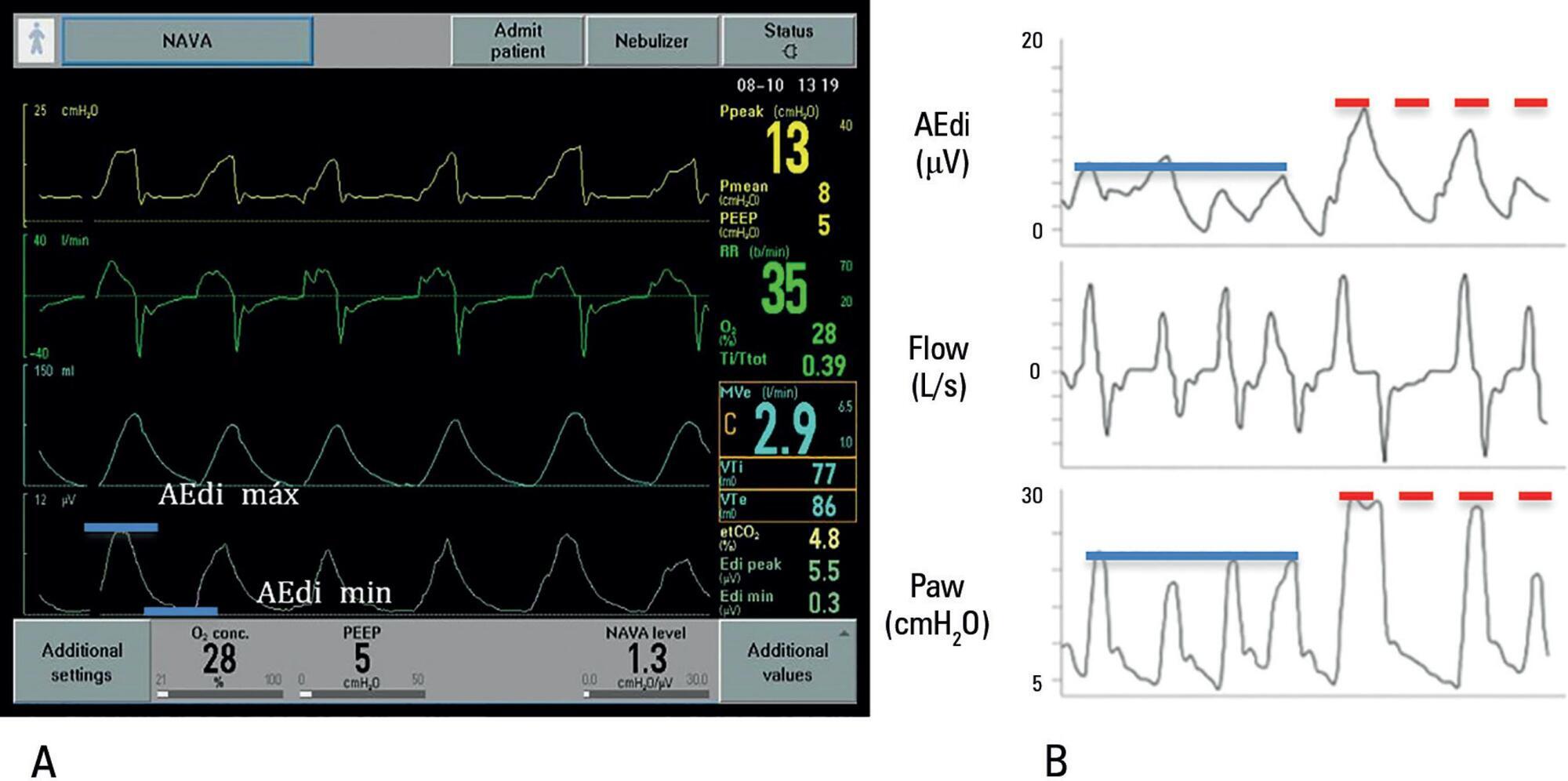
In pediatrics, good synchrony in controlled assisted ventilation is not always possible and may delay recovery, prolong mechanical ventilation (MV), and contribute to loss of muscle strength and increased calorie expenditure.()
In controlled assisted ventilation, the trigger (drive) is a decisive factor in the release of the assisted cycle, as it is regulated by the pressure difference or flow difference in the system. Very sensitive triggers induce hyperventilation and atrophy of respiratory muscles, whereas less sensitive systems require more effort, inducing hypoventilation, excessive energy expenditure, and discomfort. Even with adequate sensitivity, there is a delay in the release of the assisted cycle resulting from the interval between the central nerve impulse and the respiratory muscle contraction to initiate the trigger. Air leakage around the tracheal tube is a limiting factor that may not be perceived or compensated for by the device, requiring even greater effort by the child.
[…]
Search
Search in:


Comments